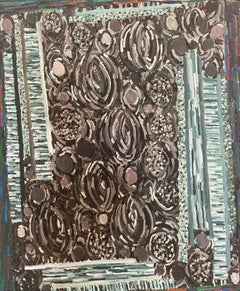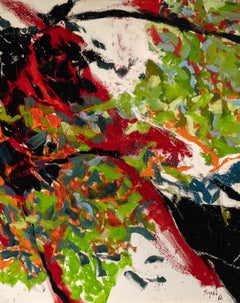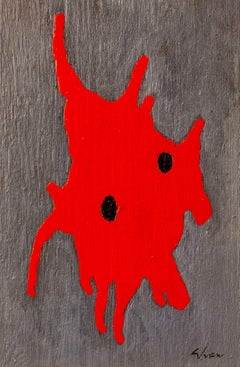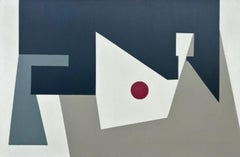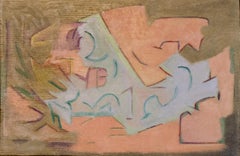Lincoln Glenn Abstract Paintings
1970s Abstract Expressionist Abstract Paintings
Canvas, Oil
1960s Abstract Expressionist Abstract Paintings
Canvas, Oil
1960s Abstract Abstract Paintings
Oil, Board
1930s Abstract Abstract Paintings
Canvas, Oil
1910s Abstract Abstract Paintings
Oil, Board
1940s Surrealist Abstract Paintings
Paper, Gouache
1930s Abstract Expressionist Abstract Paintings
Oil, Board
1940s Surrealist Abstract Paintings
Paper, Watercolor
1960s Surrealist Abstract Paintings
Foam, Mixed Media, Acrylic, Board
1960s Abstract Expressionist Abstract Paintings
Linen, Oil
1960s Abstract Expressionist Abstract Paintings
Linen, Oil
1960s Abstract Expressionist Abstract Paintings
Linen, Oil
1950s American Modern Figurative Paintings
Canvas, Oil
1950s Abstract Figurative Paintings
Canvas, Oil
1950s Realist Figurative Paintings
Canvas, Oil
1970s Abstract Expressionist Abstract Paintings
Canvas, Acrylic
1940s Abstract Geometric Landscape Paintings
Oil, Board
1970s Abstract Expressionist Abstract Paintings
Canvas, Acrylic
1970s Abstract Expressionist Abstract Paintings
Canvas, Acrylic
1970s Abstract Expressionist Abstract Paintings
Canvas, Acrylic
1960s Abstract Expressionist Abstract Paintings
Canvas, Oil
1960s Abstract Expressionist Abstract Paintings
Linen, Oil
1970s Abstract Expressionist Abstract Paintings
Canvas, Acrylic
1950s Abstract Expressionist Abstract Paintings
Linen, Oil
1960s Abstract Expressionist Abstract Paintings
Canvas, Oil
1960s Abstract Expressionist Abstract Paintings
Linen, Oil
Mid-20th Century Abstract Expressionist Abstract Paintings
Linen, Oil
1970s Abstract Expressionist Abstract Paintings
Canvas, Acrylic
1970s Abstract Expressionist Abstract Paintings
Canvas, Acrylic
1950s Abstract Abstract Paintings
Canvas, Oil
1970s Color-Field Abstract Paintings
Canvas, Acrylic
1980s Abstract Abstract Paintings
Canvas, Oil
1980s Surrealist Abstract Paintings
Canvas, Oil
1980s Feminist Abstract Paintings
Paper
1960s Abstract Abstract Paintings
Paper, Oil
1960s Color-Field Abstract Paintings
Canvas, Oil
1970s Abstract Paintings
Linen, Acrylic
1930s Abstract Abstract Paintings
Canvas, Oil
Early 2000s Abstract Abstract Paintings
Canvas, Acrylic
1970s Abstract Abstract Paintings
Canvas, Oil
1970s Abstract Abstract Paintings
Paper, Ink, Graphite
1970s Abstract Abstract Paintings
Acrylic, Paper, Ink, Graphite
1970s Abstract Abstract Paintings
Acrylic
1960s Abstract Abstract Paintings
Paper, Acrylic, Graphite
1970s Abstract Abstract Paintings
Linen, Paper, Acrylic
1970s Abstract Abstract Paintings
Linen, Acrylic
1970s Abstract Abstract Paintings
Linen, Acrylic
1960s Abstract Paintings
Linen, Paper, Acrylic
1960s Abstract Abstract Paintings
Canvas, Oil
1960s Abstract Abstract Paintings
Canvas, Oil
1950s Abstract Abstract Paintings
Canvas, Oil
1940s Surrealist Abstract Paintings
Canvas, Oil
1970s Abstract Abstract Paintings
Canvas, Acrylic
1960s Abstract Abstract Paintings
Canvas, Acrylic
1960s Abstract Abstract Paintings
Canvas, Acrylic
1960s Abstract Abstract Paintings
Canvas, Acrylic
1960s Abstract Abstract Paintings
Canvas, Acrylic
1970s Abstract Abstract Paintings
Canvas, Acrylic
1920s Abstract Abstract Paintings
Canvas, Oil
Early 2000s Contemporary Abstract Drawings and Watercolors
Paper, Watercolor
